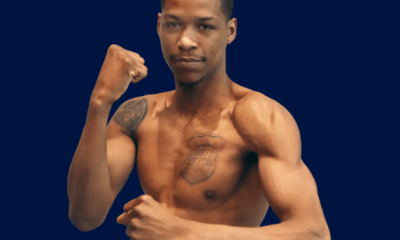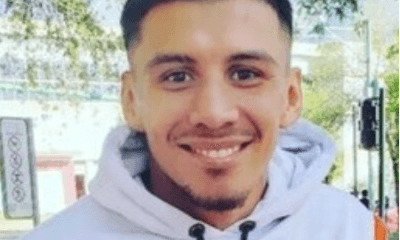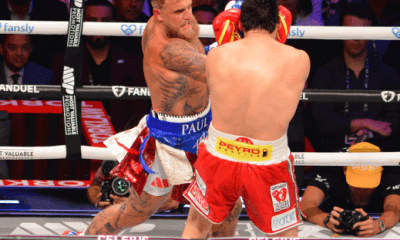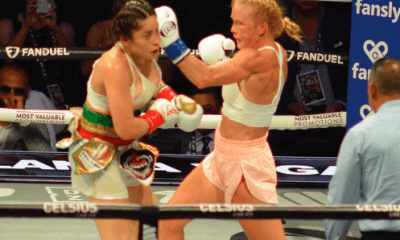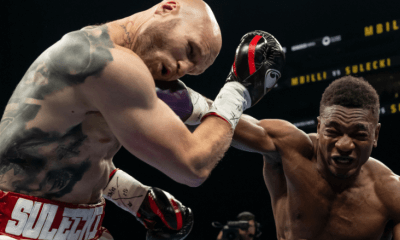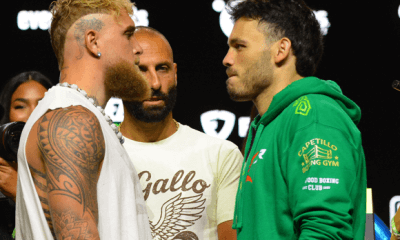Featured Articles
Boxing Odds and Ends: Looking Back and Looking Ahead
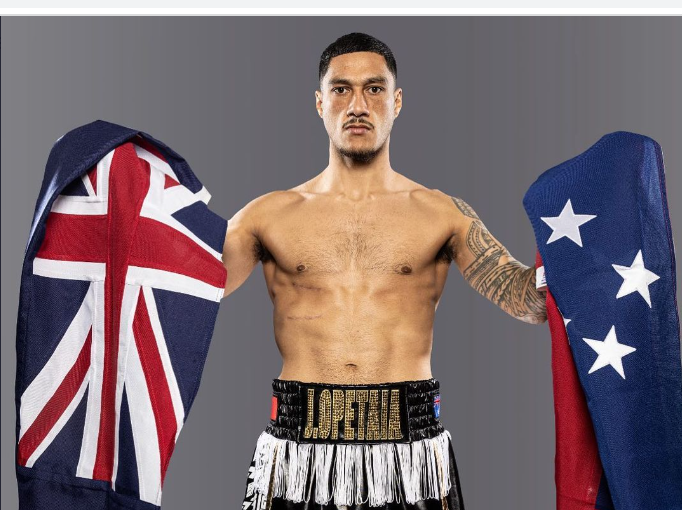
Boxing fans in Australia are still buzzing over Jai Opetaia’s gritty, title-winning effort on Saturday, July 2. Opetaia overcome significant adversity to wrest the IBF and lineal world cruiserweight title from Mairis Briedis in a pulsating and bloody battle in Broadbeach, Queensland.
A two-time finalist in the World Boxing Super Series, Mairis Briedis was widely regarded as the sport’s best cruiserweight. His lone defeat prior to Saturday was a narrow setback at the hands of Oleksandr Usyk.
It was plain at the end of the fight that Opetaia had suffered a broken jaw. The words coming out of his mouth during the short, post-fight interview were unintelligible. However, it was worse than assumed. An x-ray showed that the jaw was actually broken in two places and that the fractures were on both sides of the mandible. The first break occurred in round two and the second in round 11.
“Opetaia would have to be considered the toughest fighter on the planet after continuing on from round two with one side of his jaw broken, then the other side broken late in the fight and still winning rounds against a vicious puncher in Briedis,” Opetaia’s promoter Dean Lonergan told Sky Sports.
Opetaia turned 27 two days before the fight. The match transpired exactly five years to the day from Jeff Horn’s massive upset of Manny Pacquiao in Brisbane.
Briedis was a consensus 11/5 favorite, but there was plenty of money on the undefeated (21-0, 17 KOs) Opetaia who represented Australia in the 2012 Olympics at the age of 16, making him the youngest Aussie boxer to ever compete in an Olympiad.
Opetaia will reportedly need at least three months to recover before he can resume sparring. As for what is next for him, speculation has centered on a pair of undefeated Brits – Richard Riakporhe and Lawrence Okolie. Riakporhe is the highest-rated contender in the IBF rankings; Okolie owns the WBO cruiserweight belt.
Opetaia would be favored over Riakporhe, but not over Okolie. However, at six-foot-five and with an 82 ½-inch reach, Okolie is poised to join the heavyweight ranks and may not be willing to wait around for a unification fight.
A rematch with Briedis is also a possibility. The decision in Opetaia’s favor, although unanimous (115-113, 116-112 x2), was far from clear-cut. Had the fight been held on Briedis’s turf in Latvia, the decision would have likely gone the other way.
To Briedis’s credit, he offered not a whimper of protest when the decision was read and went to Opetaia’s dressing room to congratulate him before leaving the arena.
Zolani Tete
He’s back
On Nov. 18, 2017, Zolani Tete stopped Siboniso Gonya with a KO that went viral. If you choose to check it out — it’s still up there on youtube — don’t blink. The entire fight, which ended with Gonya flat on his back, unconscious, lasted all of 11 seconds. A world bantamweight title was at stake and the one-punch knockout stands as the fastest stoppage in world championship boxing history.
Three fights later, on Nov. 20, 2019, Tete was stopped in three rounds by John Riel Casimero. Prior to this fight, he had been forced to pull out of his scheduled match with Nonito Donaire in the semifinals of the World Boxing Super Series because of a shoulder injury.
Tete was out of action for 25 months after the Casimero defeat. He returned to the ring in December of last year in Johannesburg in his homeland of South Africa for a tune-up fight in which he blasted out his overmatched opponent in the opening round. This past Saturday, he resurfaced in London and resurrected his flagging career in a super bantamweight contest for the British Commonwealth title.
Tete was pit against Jason Cunningham, a Doncaster man riding a seven-fight winning streak. On paper it was a competitive match, but Cunningham was out of his element. Tete controlled the first three rounds with his jab and then brought the heavy artillery. It was all over at the 0:34 mark of round four.
At age 34, it would appear that Tete still has a lot of mileage left in him. There was a time when people were salivating over the thought of a match between him and Naoya Inoue. That match may well come to fruition, but not likely anytime soon. A match between Tete and WBO 122-pound title-holder Stephen Fulton is no less intriguing and may well happen within the next 12 months.
Looking Ahead
The boxing slate over the Fourth of July weekend was rather soft – there was nothing of consequence on American soil – and this coming weekend is also skimpy.
Saturday’s heavyweight match In London between 41-year-old Kubrat Pulev (29-2, 14 KOs) and 38-year-old Derek Chisora (32-12, 23 KOs) doesn’t get the juices flowing. They fought six years ago in Hamburg, Germany, and although the decision favoring Pulev was split, that was only because of a head-scratching scorecard. The Bulgarian controlled the fight which wasn’t particularly entertaining.
The co-feature between super welterweights Israil Madrimov (8-0, 6 KOs) and Michel Soro (35-3-1, 24 KOs) is also a rematch. The talented Madrimov, who has never fought a pro fight scheduled for less than 10 rounds, won the first meeting on a controversial stoppage. The Spanish referee did not hear the bell ending the ninth frame and stopped the bout well after the bell had sounded. The match was held on Madrimov’s turf in Tashkent, Uzbekistan.
The WBA, which sanctioned the bout as a final eliminator for Jermell Charlo’s 154-pound title, let the result stand but ordered an immediate rematch.
Looking further down the road, the Sept. 10 card at London’s O2 Arena shapes up as a lively affair. The women take center stage with a pair of title unification bouts. WBC/WBA/IBF world middleweight champion Claressa Shields (12-0, 2 KOs) meets WBO title-holder Savannah Marshall (12-0, 10 KOs) in the featured bout. Marshall, who hails from the English port city of Hartlepool and had her first pro fight in Las Vegas under the Mayweather Promotions banner, is the only person to defeat Claressa Shields in a boxing ring, accomplishing the feat in 2012 at an amateur tournament in China.
Shields has out-classed all of her professional opponents — has she even lost a round? – and it’s odd to find her in the role of an underdog, but Marshall, who packs a bigger punch, is currently a small favorite. No odds have yet been posted on the co-feature, a 130-pound title unification fight between Americans Mikaela Mayer (17-0, 5 KOs) and Alycia Baumgardner (12-1, 7 KOs), but on paper this will be Mayer’s toughest fight.
-

 Featured Articles3 weeks ago
Featured Articles3 weeks agoAvila Perspective, Chap. 330: Matchroom in New York plus the Latest on Canelo-Crawford
-

 Featured Articles1 week ago
Featured Articles1 week agoVito Mielnicki Jr Whitewashes Kamil Gardzielik Before the Home Folks in Newark
-
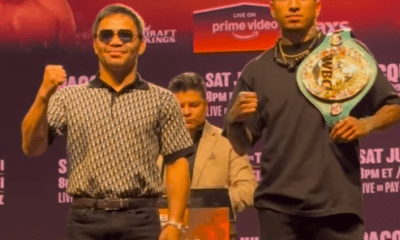
 Featured Articles4 weeks ago
Featured Articles4 weeks agoAvila Perspective, Chap 329: Pacquiao is Back, Fabio in England and More
-

 Featured Articles3 weeks ago
Featured Articles3 weeks agoOpetaia and Nakatani Crush Overmatched Foes, Capping Off a Wild Boxing Weekend
-

 Featured Articles2 weeks ago
Featured Articles2 weeks agoCatching Up with Clay Moyle Who Talks About His Massive Collection of Boxing Books
-

 Featured Articles3 weeks ago
Featured Articles3 weeks agoFabio Wardley Comes from Behind to KO Justis Huni
-

 Featured Articles1 week ago
Featured Articles1 week agoMore Medals for Hawaii’s Patricio Family at the USA Boxing Summer Festival
-
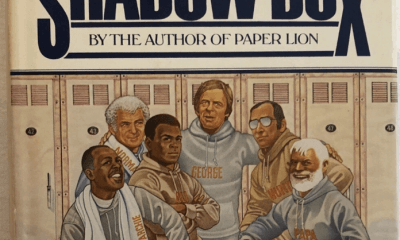
 Featured Articles4 weeks ago
Featured Articles4 weeks agoDelving into ‘Hoopla’ with Notes on Books by George Plimpton and Joyce Carol Oates

